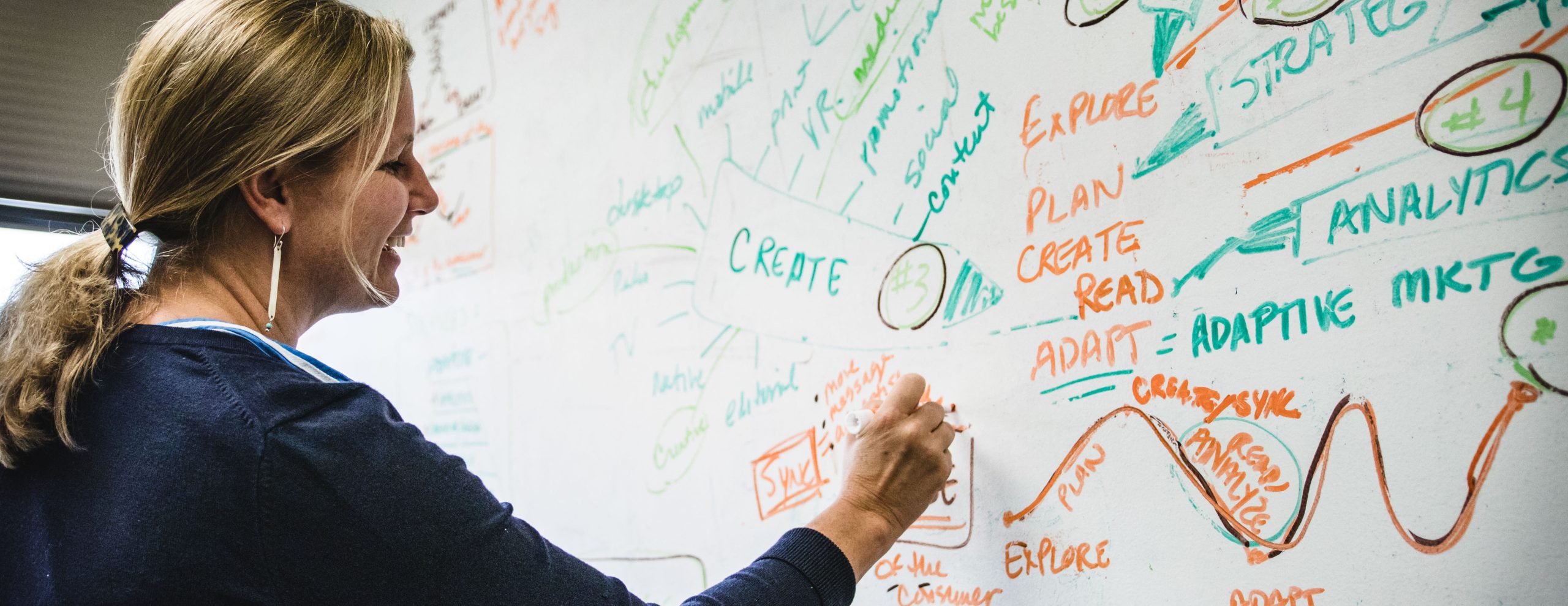Just like the relationship between a sales and marketing team, when it comes to the relationship between a brand and a marketing agency, nothing beats a good communication strategy. It can be the difference between a partnership that lasts and one that fizzles out.
But bringing in an agency can cause more problems than it solves if there isn’t a road map for the relationship, and a clear set of expectations for collaboration.
As an agency, how do you juggle clients, get the necessary understanding of a brand you are working with, and produce a seamless customer experience?
As a brand, how do you find the right agency for you, communicate your vision for your brand, and meet your own goals?
I got to sit down with Quattro’s VP of Strategy, Julie Herbster, to talk communication, collaboration, and whiteboard brainstorming.
Can you talk about the importance of the brand/agency partnership?
For the brand, it’s important to think of the agency as an extension of the internal marketing team — really, they should almost act as offsite employees. Make sure that they’re aligned with your business goals, in the loop on strategy, and that tactically, they are looking at the same data — and using the same benchmarks — as you are internally. It’s important to remember that you’re one team, and that the business won’t reach goals efficiently if the brand has one view of those goals and the agency has another.
What’s the most important thing for a brand to look for in an agency? And what should an agency learn about a brand before beginning a partnership?
As a brand, look for marketing agencies that are going to do more than execute tactically. You want a partner who will help you develop a strategy, and who’s capable of looking at the big picture with you. From a practical standpoint, make sure they’re easy to work with logistically. They should be willing to come into your office as often as needed, but, regardless of location, the agency should offer a cloud-based tool for collaborative reporting and analytics and a plan for automation. And for both parties, make sure that you mesh from a personality standpoint!
As an agency, when you partner with a brand, it’s like joining a new team — you have to learn the playbook. Unless a brand is at square one, there’s going to be a lot of data already in place about target audience, consumer behavior, and competition — in addition to a style guide outlining aspects of the brand identity. But, it’s important to step outside the data too. Who are these consumers as people? What is the problem they need to solve? Looking at the human experience can reveal things data just can’t — new competition from outside the industry, an evolving consumer behavior that could change product use or application, etc. Part of the benefit of using an outside agency is in having an objective viewpoint — and keeping that edge is something the agency should strive for.
Is there one channel you think requires more collaboration than the others?
There’s not one channel in particular. The big thing is to make sure that there’s communication and collaboration between channels and the teams working on those channels so that all media is contributing efficiently to reaching business goals. It’s critical to share data between teams, because that’s what’s going to create a holistic strategy — not just for the brand to gain efficient media spend and return on investment, but for the consumer to have a seamless experience with the brand. Aligning multi-channel marketing efforts also gains cost efficiency by allowing you to repurpose content across owned, earned, and paid channels. For example, when a piece of content is getting high engagement among prospects within a social media campaign, the same piece could potentially boost open rates that have fallen behind on an email retention initiative. Efficiency today requires thinking outside a particular channel or line of business.
What’s the most important thing for an agency to do when balancing multiple clients with drastically different brands?
Having teams that are dedicated to working alongside the clients and that are 100% familiar with those brands and industries is great. But, you also need to have teams that are outside of those client groups acting collaboratively across clients — watching for opportunities to share knowledge, try new tactics, and push innovative thinking. It’s easy to get into a rut when you’re working exclusively on one brand or product. Breaking employees out of those cycles, and providing an environment to think across industries and outside the mold, allows for a new application of media and message. It’s critical to keep thinking fresh.
What are some quick ways for an agency and a brand that are struggling to get on the same page to revitalize their partnership?
I am a firm believer in getting offsite, away from your office (and the client’s), and getting in a room together with a whiteboard. It’s important — at least quarterly — to map out your goals, challenges, key strategies, tactics, and new opportunities. This can be helpful in breaking apart issues, maximizing resources and return, and finding new ways to address a stagnant market or downturn in results. Quarterly offsites quickly get people back on the same page and all rowing in the same direction.
Want to learn more about how to optimize the relationship between an agency and brand? Julie and her fellow panelists will be continuing the conversation at the PA Marketing Summit on October 18th with their panel, “Building a Successful Brand/Agency Collaboration.” If you’re interested in attending the event, let us know! In the meantime, say hey on Twitter @QuattroPhilly where we’re always talking about what’s big in marketing.
